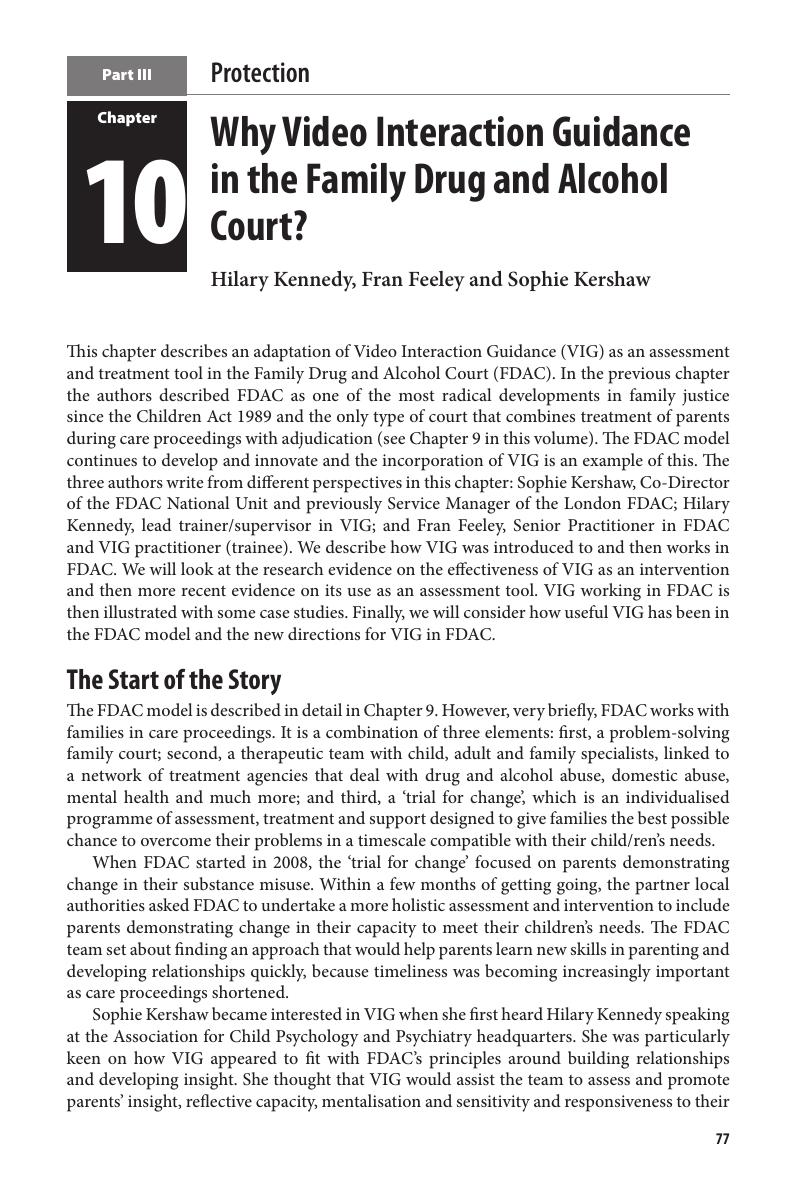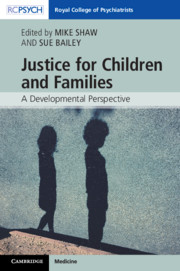Book contents
- Justice for Children and Families
- Justice for Children and Families
- Copyright page
- Contents
- Contributors
- Foreword
- Part I Overview
- Part II Fairness
- Part III Protection
- Chapter 8 Birth Mothers Returning to Court
- Chapter 9 The Family Drug and Alcohol Court
- Chapter 10 Why Video Interaction Guidance in the Family Drug and Alcohol Court?
- Chapter 11 A Life Course Approach to Promoting Healthy Behaviour
- Chapter 12 Female Genital Mutilation
- Chapter 13 Litigation for Failure to Remove
- Part IV Autonomy
- Part V Synthesis and Response
- Index
- References
Chapter 10 - Why Video Interaction Guidance in the Family Drug and Alcohol Court?
from Part III - Protection
Published online by Cambridge University Press: 13 August 2018
- Justice for Children and Families
- Justice for Children and Families
- Copyright page
- Contents
- Contributors
- Foreword
- Part I Overview
- Part II Fairness
- Part III Protection
- Chapter 8 Birth Mothers Returning to Court
- Chapter 9 The Family Drug and Alcohol Court
- Chapter 10 Why Video Interaction Guidance in the Family Drug and Alcohol Court?
- Chapter 11 A Life Course Approach to Promoting Healthy Behaviour
- Chapter 12 Female Genital Mutilation
- Chapter 13 Litigation for Failure to Remove
- Part IV Autonomy
- Part V Synthesis and Response
- Index
- References
Summary

- Type
- Chapter
- Information
- Justice for Children and FamiliesA Developmental Perspective, pp. 77 - 88Publisher: Cambridge University PressPrint publication year: 2018
References
- 1
- Cited by



